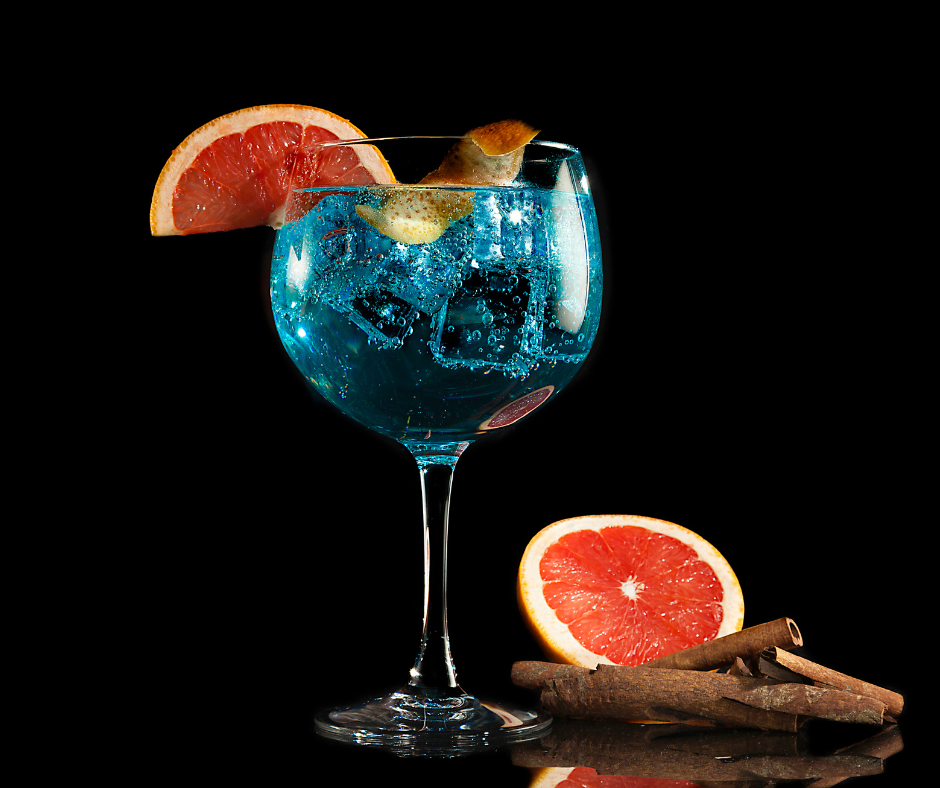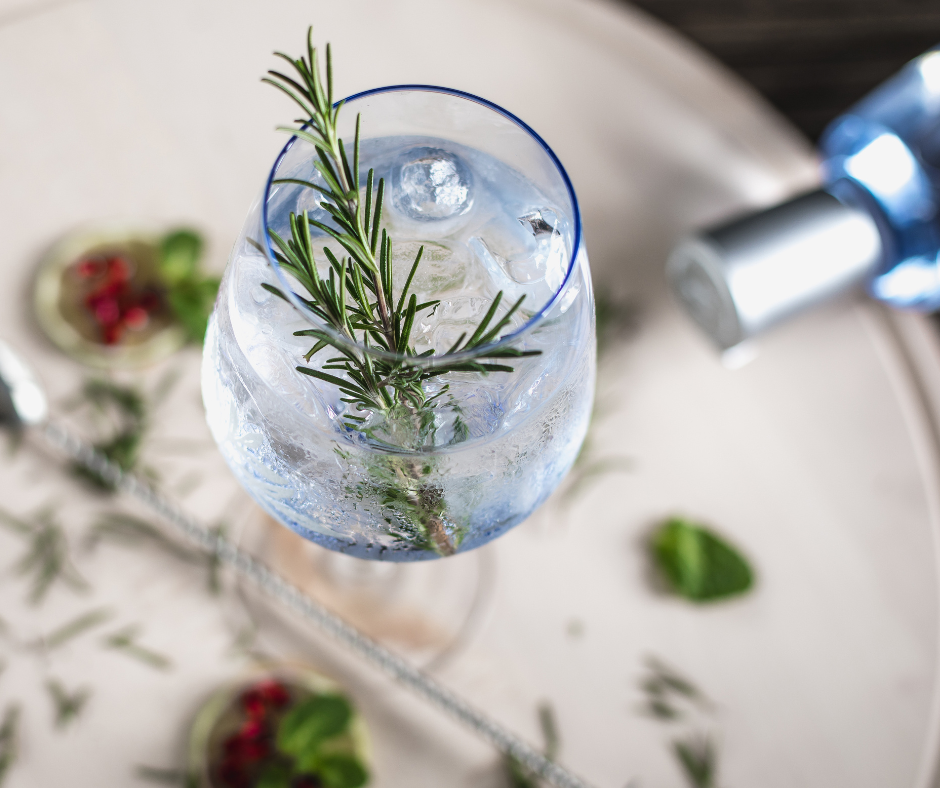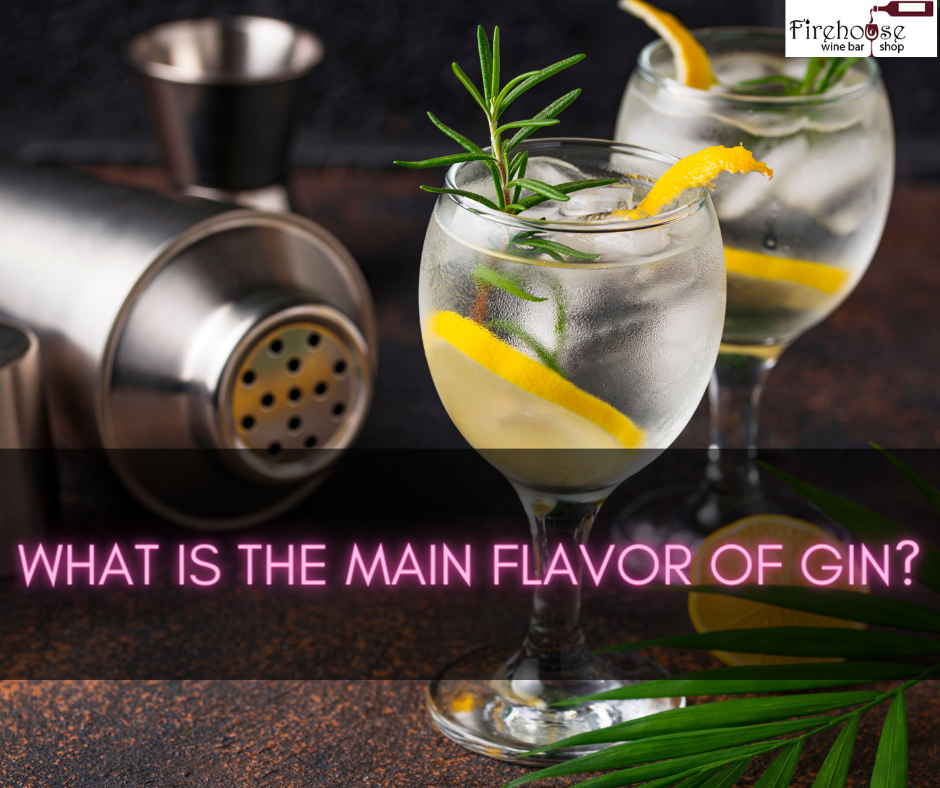Introduction
In spirits, gin stands out for its distinct flavor profile. The unique taste of gin is created through a combination of various botanicals, which are the key ingredients that give it its signature aroma and taste. This blog will explore ‘What Is the Main Flavor of Gin?‘ and identify the dominant botanicals contributing to its taste profile.
The Basics Of Gin
Gin is a spirit that has been popular for centuries and is known for its versatility and ability to blend well with other ingredients in cocktails. The main characteristic of gin is its predominant flavor derived from juniper berries. Without juniper berries, a liquor cannot be classified as gin. However, gin is not solely defined by the presence of Juniper. The addition of other botanicals is what sets different types of gin apart.
Importance Of Botanicals In Gin Flavor
Botanicals play a crucial role in defining the flavor and aroma of gin. These botanicals include herbs, spices, fruits, roots, and flowers. Each botanical adds unique characteristics to the final product, resulting in a wide range of flavor profiles.
Some commonly used botanicals in gin include coriander, citrus peel, cinnamon, licorice root, and angelica. Coriander seeds, for example, are often used to mask the bitter essence of quinine, while citrus peels add a bright and citrusy note to the gin. Licorice root provides a hint of sweetness, enhancing the overall savoriness of the spirit.
To better understand the main types of gin and their flavor profiles, let’s take a closer look at some of the dominant botanicals in each type:
Here’s a table to help you understand the main types of gin and their dominant botanicals:
| Type of Gin | Dominant Botanicals |
|---|---|
| London Dry Gin | Juniper, Coriander, Angelica, Citrus Peel |
| Old Tom Gin | Juniper, Licorice Root |
| Sloe Gin | Juniper, Sloe Berries |
| New Western Dry Gin | Various Botanicals with less Juniper |
Each type of gin has its distinct flavor profile, giving you a wide range of options based on your personal preferences.
In conclusion, the main flavor of gin is derived from the presence of juniper berries, but the addition of other botanicals is what truly defines its taste profile. Understanding the dominant botanicals in different types of gin can help you make informed choices when selecting the perfect gin for your cocktail creations. So, next time you sip on a gin-based drink, take a moment to appreciate the harmonious blend of botanicals that make it so unique.

What Is The Main Flavor Of Gin? – Identifying The Dominant Botanicals In Gin’s Taste Profile
Gin is a versatile spirit that gets its distinct flavor from a combination of botanicals. So, What Is the Main Flavor of Gin? While juniper berries are the essential ingredient that gives gin its signature taste, other botanicals contribute to its flavor profile. One of the main botanical categories used in gin production is citrus peel.
Adding Brightness And Zest To Gin
Citrus peel, such as lemon and orange peel, is commonly used in gin to add a refreshing, bright, and zesty note to the spirit. The oils from the citrus peel infuse the gin during the distillation process, imparting their distinctive flavors. The citrus notes in gin provide a vibrant and uplifting character, balancing out the herbal and Juniper flavors.
Different Types Of Citrus Peel Used In Gin Production
Gin distillers have the option to choose from a variety of citrus peels to create different flavor profiles. Some gins highlight the prominent use of specific citrus peels, while others use a combination of different types. Here are a few citrus peels commonly used in gin production:
- Lemon Peel: Lemon peel is one of the most widely used botanicals in gin production. Its tart and zesty flavor adds a refreshing and citrusy note to the spirit. Gins like Bluecoat American Gin and Leopold’s Gin showcase the prominent use of lemon peel in their flavor profile.
- Orange Peel: Fresh and dried orange peel is another popular botanical used in gin. The peel of sweet orange is typically used fresh, while dried orange peel is often used in gin production. Orange peel adds a bright and slightly sweet aroma to the spirit. Some gins that highlight the use of orange peel include Beefeater and Tanqueray No. TEN.
- Pink Grapefruit Peel: Its caustic and citrusy nature adds a unique flavor to gin. Its chameleon-like quality makes it perfect for balancing out the botanicals in cocktails. Sacred Gin and Beefeater’s Crown Jewel are gins that feature the noticeable taste of pink grapefruit.
- Yuzu Peel: Yuzu, a citrus fruit from Japan, is also used as a botanical in some gins. Yuzu peel offers a distinct, tangy, and slightly floral flavor. Although not as common as other citrus peels, gins that showcase yuzu include Monkey 47 Gin and The Botanist.
Using citrus peels in gin production provides a wide range of flavor possibilities. Whether you prefer a gin with a prominent lemon note or one that boasts the bright essence of pink grapefruit, there is a gin out there to suit your taste preferences.
Juniper
The Dominant Flavor In Gin
When it comes to ‘What Is the Main Flavor of Gin?’, the main flavor that sets it apart from other spirits is Juniper. Juniper berries give gin its signature herbal, piney, and almost medicinal flavor. It is the dominant botanical that defines the taste profile of gin.
Juniper is a coniferous plant that produces small berries, technically called “modified conifer cones,” used in gin production. These berries have a unique flavor profile described as tasting of resin, sap, and pine. The strong, aromatic nature of Juniper gives gin its distinctive character and makes it stand out among other liquors.
Characteristics And Aromas Of Juniper
Juniper berries are rich in essential oils, contributing to their potent fragrance and flavor. When you take a sip of gin, you can expect to experience the intense aroma and taste of Juniper prominently. The flavor is often described as pine-like, herbaceous, and subtly sweet.
In addition to its resinous and piney character, Juniper infuses gin with other herbal and botanical nuances. Depending on the recipe and production techniques, gin can have various secondary flavors that complement the dominant juniper taste. These may include citrus notes, floral undertones, spices like coriander, or other botanical elements.
While Juniper is the essence of gin, the secondary flavors and botanicals used in the production process can produce a wide range of taste profiles. This versatility allows for many gin expressions, each with its unique blend of flavors and characteristics.
In conclusion, Juniper is the primary flavor in gin, providing it with its distinctive taste and aroma. The piney, resinous, and herbal notes of Juniper make gin beloved by many and give it its unparalleled character. Whether you prefer a classic London dry gin or a modern craft variation, the presence of Juniper guarantees a gin’s unmistakable flavor.
Coriander
Coriander is a widely used botanical in gin production and significantly shapes its flavor profile. It is derived from the seeds of the coriander plant and adds intricate spice and complexity to gin. The flavor of coriander in gin is more discernible towards the end of the flavor journey, providing a distinctive and memorable taste experience.
Spice And Complexity In Gin
Coriander brings a range of flavors to gin, from dusty and spicy notes to a slightly fruity aroma. It has been used in gin production for centuries, alongside Juniper, and is considered a classic botanical. The spice and depth coriander adds to gin make it an essential ingredient in many beloved recipes.
How Coriander Enhances Gin’s Flavor Profile?
The flavor of coriander in gin is brought to life through distillation, where its unique characteristics are extracted and blended with other botanicals. Distillers use coriander to create a depth of flavor that complements the juniper base. It adds a touch of warmth and complexity to the overall taste of gin, elevating its aroma and enhancing the overall drinking experience.
Coriander is often used alongside botanicals like citrus peel, angelica root, and cardamom to create a well-balanced and flavorful gin. The combination of these ingredients creates a harmonious flavor profile that is enjoyed by gin enthusiasts worldwide.
Overall, coriander is a vital botanical that adds spice, complexity, and depth to gin. Its distinctive flavor profile enhances the taste experience and contributes to the diverse gin flavors available. Whether you prefer a classic London Dry gin or a more contemporary style, coriander will likely be a key ingredient in shaping its flavor.
Angelica Root
When it comes to the main flavor of gin, one botanical that plays a significant role is angelica root. This herbal ingredient contributes earthy and herbal notes that add depth and complexity to the taste profile of gin.
Angelica root, also known as Angelica archangelica, is a perennial herb native to Northern Europe and Siberia. It has been used for centuries in traditional medicine and culinary applications. In gin production, angelica root is one of the key botanicals macerated or steeped in the base spirit during the distillation process.
The flavor profile of angelica root is characterized by a complex combination of bittersweet, woody, and herbaceous aromas and a slight but distinctive note of musk. These unique qualities make angelica root an essential component in creating well-balanced gins.
In terms of taste, angelica root adds a subtle earthiness to gin that helps to harmonize and enhance the flavors of other botanicals. Its herbal notes provide a backbone to the overall flavor profile, adding depth and complexity. Angelica root also acts as a natural stabilizer, helping to integrate the different flavors and aromas of the other botanicals in gin.
While botanicals’ exact composition and proportions vary among gin brands and recipes, angelica root is often a key ingredient. Its presence ensures that gin has a distinct and well-rounded flavor characteristic of this beloved spirit.
Overall, angelica root plays a crucial role in shaping the main flavor of gin. Its earthy and herbal notes and its ability to enhance and harmonize other botanicals contribute to the complexity and depth of gin’s taste profile. Whether enjoyed in a classic G&T or mixed into a craft cocktail, angelica root adds an essential dimension to the overall gin.

Other Common Botanicals In Gin
In addition to the main botanicals mentioned above, many other herbs, spices, and roots are used in gin production. Some of these include:
- Cardamom adds a distinctively aromatic and spicy flavor.
- Licorice Root contributes a sweet and earthy taste.
- Orris Root adds a floral and sweet aroma.
- Cassia Bark: similar to cinnamon, providing a warm and spicy note.
- Cucumber: adds a refreshing and subtle vegetal flavor.
- Lavender: imparts a floral and fragrant aroma.
Exploring The Variety Of Botanicals Used In Gin Making
Gin is a versatile spirit that allows for the inclusion of a wide range of botanicals. Distillers often use unique combinations of botanicals to create their signature flavors and profiles. Some gins may emphasize certain botanicals more prominently, resulting in different taste experiences.
It’s important to note that gin’s flavor profile can vary greatly depending on the brand and the specific blend of botanicals used. Some gins may have a more traditional and juniper-forward taste, while others may feature a bolder and more complex profile with various botanical flavors.
In conclusion, while Juniper is the main flavor of gin, the taste profile results from a combination of botanicals. Citrus fruits, coriander, and other botanicals each contribute unique characteristics to create the diverse and nuanced flavors of different gins. So, whether you prefer a classic London Dry gin or enjoy exploring new and innovative botanical blends, the world of gin offers a wide range of flavors to suit every palate.
The Role Of Blending And Distillation Techniques
In the world of gin, the main flavor is derived from the botanicals used during the distillation process. While juniper berries are the key ingredient that gives gin its characteristic taste, distilleries have the creative freedom to add a variety of other botanicals to create unique flavor profiles.
How Distillers Craft The Perfect Gin Flavor?
Distillers carefully select and blend botanicals to achieve the desired flavor profile for their gin. These botanicals can include various ingredients, such as herbs, spices, fruits, seeds, and roots, each contributing its unique aroma and taste.
During the distillation process, the botanicals are added to the neutral alcohol base and heated. This allows the alcohol to vaporize, carrying the flavors and aromas of the botanicals. The vapor then condenses, forming a liquid gin that is rich in flavor.
Distillers may use different blending and distillation techniques to enhance the flavors of the botanicals. One common method is the steep method, where the botanicals are steeped in alcohol to infuse their flavors over time. Another technique is the vapor infusion method, where the botanicals are placed in baskets in the still, and the alcohol vapor passes through them, picking up their flavors.
Balancing Botanicals For A Harmonious Taste
Achieving the perfect balance of botanical flavors is crucial for creating a delicious and harmonious gin taste profile. Distillers carefully consider the intensity and characteristics of each botanical and how they interact with one another.
Some botanicals may contribute citrusy notes, while others add spice or floral undertones. The careful combination and proportioning of these botanicals result in the complexity and depth of flavor found in different gins.
Each distillery has its unique recipe and approach to blending botanicals, resulting in a wide variety of gin flavors on the market. From traditional London Dry gins to botanical-forward contemporary gins, there is something to suit every taste preference.
So, the next time you enjoy a glass of gin, take a moment to appreciate the artistry and craftsmanship that goes into crafting its distinctive flavor. The distiller’s choice and blending of botanicals play a significant role in creating a delightful and memorable gin.

Gin Tasting And Pairing
Tips For Tasting And Evaluating Gin
Gin is a spirit known for its diverse and complex flavor profile. With many botanicals and herbs used in its production, gin offers a wide range of tasting notes that can vary from brand to brand. Here are some tips for tasting and evaluating gin to identify ‘What Is the Main Flavor of Gin?’:
- Smell: Begin swirling the gin in a glass to release its aromas. Take a moment to inhale deeply and identify any dominant scents. Look for herbal, floral, citrus, or spicy notes.
- Taste: Take a small sip of the gin and let it rest on your tongue for a few seconds. Pay attention to the different flavors that emerge. Look for juniper, citrus, floral, spice, or herbaceous notes.
- Mouthfeel: Notice the texture and body of the gin. Is it smooth and creamy or sharp and biting? This can vary depending on the distillation process and the presence of certain botanicals.
- Finish: Swallow the gin and observe the aftertaste. Is it lingering and complex or short-lived? The finish can provide additional clues about the gin’s flavor profile.
- Compare: If you have multiple gins to taste, compare their flavors. Note the differences and similarities between brands and varieties.
Food Pairings To Complement Gin’s Flavor Profile
The unique flavor profile of gin makes it a versatile spirit for food pairing. Consider these food options to complement different gin flavors:
- Seafood: Smoked salmon, oysters, and shrimp marinated with ginger and garlic can enhance gin’s floral and herbal notes.
- Berries: Blueberries, cranberries, and strawberries can balance out the sharpness of Juniper and add a touch of sweetness to a gin cocktail or serve as a healthy snack.
- Herbs and Spices: Cold meats seasoned with herbs like thyme, sage, or basil can complement gin’s herbaceous flavors. Consider serving gin alongside a grazing board with a selection of extra-mature cheeses.
- Indian Cuisine: The crispness of gin and tonic pairs well with spicy Indian foods. The spices used in gin production can align with those used in Indian dishes.
- Juniper and Lamb: Gins emphasizing Juniper can be paired with lamb dishes that use mint or herbs like rosemary or thyme.
Remember, taste is subjective, and experimentation is key in finding the perfect pairing for your gin. Don’t be afraid to try new combinations and explore the diverse world of gin flavors.
FAQ: What Is the Main Flavor of Gin? – Identifying the Dominant Botanicals in Gin’s Taste Profile
Q: What is gin?
A: Gin is a popular spirit that is primarily made from juniper berries and other botanicals. These botanicals give gin its distinct flavor and aroma profile.
Q: What are botanicals?
A: Botanicals are ingredients that are used to infuse flavor into gin. They can include a wide range of herbs, spices, fruits, flowers, and roots that the distiller carefully selects.
Q: Why does gin have different flavors?
A: The flavors of gin can vary significantly due to the different combinations and proportions of botanicals used. Each gin brand has a unique recipe, resulting in distinct flavor profiles.
Q: What are the dominant botanicals in gin?
A: The dominant botanicals in gin can vary depending on the brand and style of gin. However, juniper berries are the most common and traditionally considered the defining ingredient of gin.
Q: Can you describe the flavor of juniper berries?
A: Juniper berries have a distinct pine-like flavor that provides the characteristic “gin taste.” They contribute a refreshing and resinous note to the overall flavor profile.
Q: Are there other common botanicals in gin besides juniper berries?
A: Yes, absolutely! Some commonly used botanicals in gin include coriander seeds, citrus peels (such as lemon or orange), angelica root, orris root, cinnamon, cardamom, and licorice.
Q: How do different botanicals affect the taste of gin?
A: Each botanical used in gin adds its own unique flavors, aromas, and characteristics. For example, coriander seeds can impart a citrusy and spicy note, while citrus peels add a zesty and refreshing twist to the gin’s profile.
Q: Can gin have other flavors besides botanicals?
A: In addition to botanicals, some gin brands may use additional flavorings or infusions to create unique flavor profiles. These might include herbs, spices, fruits, or even floral elements.
Q: Are there different styles of gin with distinct flavor profiles?
A: Yes, there are various styles of gin that offer different flavor profiles. London Dry gin tends to have a more traditional taste, while New Western-style gin emphasizes the use of non-traditional botanicals and more pronounced flavors.
Q: How can I identify the dominant botanicals in a gin’s taste?
A: To identify the dominant botanicals in a gin’s taste, you might refer to the tasting notes provided by the distiller or read reviews from experts. Additionally, experimenting with different gin brands and paying attention to the flavors can help you distinguish the dominant botanicals.
Q: Can tasting gin neat help identify the dominant botanicals?
A: Tasting gin neat can give you a general sense of its flavor profile, but sometimes, the true character of the gin’s botanicals can be best appreciated when mixed in cocktails.
Q: Are there any resources to learn more about gin and its botanicals?
A: Yes! Numerous books, online articles, and gin tastings delve into the world of botanicals and their impact on gin’s flavor. Additionally, visiting distilleries or speaking with knowledgeable bartenders can provide valuable insights.
Conclusion
Now you should know the answer to ‘What Is the Main Flavor of Gin?’. Gin is a versatile spirit with a wide range of flavor profiles that can suit different palates. While the main flavor of gin is often described as juniper-forward, many other botanicals contribute to its unique taste. The combination of botanicals used in the distilling process and the techniques employed by distillers result in various gin styles, from dry and herbal to citrusy and spicy.
When tasting gin, it’s important to consider the different botanicals and techniques used. Please pay attention to the gin’s color, aroma, and flavor notes to fully appreciate its complexity. Botanicals like coriander, cardamom, lemon peel, and orange peel are commonly used and can add sweetness, herbal notes, and citrusy flavors to the spirit.
Experimenting with different gins and cocktails can also enhance the gin-tasting experience. Whether it’s adding bitters, fruit juice, or flavored tonics to your gin and tonic, there are endless possibilities for creating unique and enjoyable combinations.
Remember to serve gin chilled to preserve its flavors, and don’t be afraid to try different variations and brands to explore the world of gin. From London Dry to Navy Strength and flavored gins, each style offers a distinct taste that can cater to different preferences.
In the end, understanding the main flavor of gin and the dominant botanicals in its taste profile allows you to appreciate the craftsmanship and creativity behind this beloved spirit. So raise your glass and savor the complex and delightful world of gin.
References:

Andre Lotz immigrated to the United States from South Africa almost 20 years ago. Still, he didn’t feel truly at home until he settled in Mobile—a city that reminds him of his childhood home of Fish Hoek on the southern cape of Africa.

